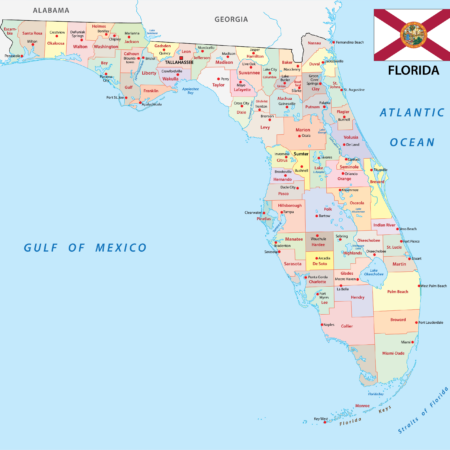Located in the southeastern corner of the contiguous United States, the state of Florida is probably best known for its stunning beaches, pleasant climate, and its booming tourism industry. It is the only state to border both the Atlantic Ocean and the Gulf of Mexico, and other important economic activities in the state include agriculture — especially citrus — and international banking.
Spanish explorers were the first Europeans to reach what is now Florida in 1513, though it had been inhabited by indigenous people for more than 14,000 years. Today, the state has a high population of immigrants from Latin America and the Caribbean.
The capital city of Florida is Tallahassee, though its most populous city is Jacksonville. Florida is one of the most populous states in the USA, and it’s got 59 cities with a population of over 50,000. We’ll take a look at the biggest cities in Florida in this post along with a map that details their locations.
Below is a map of Florida with cities. The borders of the states of Alabama and Georgia are marked with a dashed line, and cities are marked with red dots.

The table below lists the largest cities in Florida. According to the US Census, there are 59 cities in Florida with a population of over 50,000.
| Rank | City | Population |
|---|---|---|
| 1 | Jacksonville | 954,614 |
| 2 | Miami | 439,890 |
| 3 | Tampa | 387,050 |
| 4 | Orlando | 309,154 |
| 5 | St. Petersburg | 258,201 |
| 6 | Hialeah | 220,490 |
| 7 | Port St. Lucie | 217,523 |
| 8 | Cape Coral | 204,510 |
| 9 | Tallahassee | 197,102 |
| 10 | Fort Lauderdale | 181,668 |
| 11 | Pembroke Pines | 169,391 |
| 12 | Hollywood | 152,131 |
| 13 | Gainesville | 140,398 |
| 14 | Miramar | 135,077 |
| 15 | Coral Springs | 132,822 |
| 16 | Palm Bay | 122,942 |
| 17 | West Palm Beach | 117,286 |
| 18 | Clearwater | 116,674 |
| 19 | Lakeland | 115,425 |
| 20 | Pompano Beach | 111,348 |
| 21 | Miami Gardens | 110,867 |
| 22 | Davie town, Florida | 104,882 |
| 23 | Sunrise | 96,021 |
| 24 | Boca Raton | 95,787 |
| 25 | Deltona | 95,782 |
| 26 | Palm Coast | 93,833 |
| 27 | Plantation | 92,986 |
| 28 | Fort Myers | 92,245 |
| 29 | Deerfield Beach | 86,339 |
| 30 | Melbourne | 85,064 |
| 31 | Largo | 82,341 |
| 32 | Miami Beach | 80,671 |
| 33 | Homestead | 80,528 |
| 34 | Boynton Beach | 80,089 |
| 35 | North Port | 80,021 |
| 36 | Kissimmee | 79,436 |
| 37 | Doral | 75,966 |
| 38 | Daytona Beach | 74,437 |
| 39 | Lauderhill | 73,458 |
| 40 | Tamarac | 71,541 |
| 41 | Weston | 67,312 |
| 42 | Delray Beach | 66,573 |
| 43 | Ocala | 64,096 |
| 44 | Port Orange | 63,486 |
| 45 | St. Cloud | 62,043 |
| 46 | Wellington village, Florida | 61,448 |
| 47 | Jupiter town, Florida | 60,802 |
| 48 | Sanford | 60,681 |
| 49 | Palm Beach Gardens | 59,449 |
| 50 | North Miami | 59,229 |
| 51 | Margate | 58,001 |
| 52 | Coconut Creek | 57,117 |
| 53 | Bradenton | 55,905 |
| 54 | Apopka | 55,496 |
| 55 | Bonita Springs | 54,904 |
| 56 | Sarasota | 54,764 |
| 57 | Pensacola | 53,678 |
| 58 | Pinellas Park | 53,202 |
| 59 | Winter Haven | 52,710 |
Starting with Pompano Beach, let’s take a look at the 20 biggest cities in Florida. We’ll explore what makes each of them unique below.
20. Pompano Beach
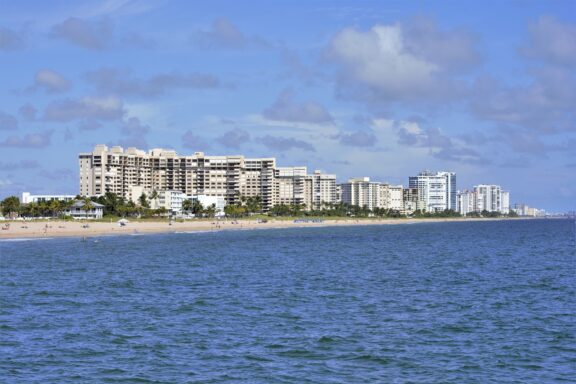
Population: 111,348
Pompano Beach is situated along the Atlantic Coast in southeastern Florida and has a population of about 112,000. The city gets its name from the Florida Pompano, a tropical fish found in the Atlantic. The various activities available in Pompano Beach such as swimming, fishing, and boating make it a popular place for visiting tourists, and the downtown area offers nightlife and dining options.
One of the notable events that happen annually in this city is the Pompano Beach Fishing Rodeo, which is part of Southern Florida tradition and one of the biggest fishing tournaments in the state.
19. Lakeland
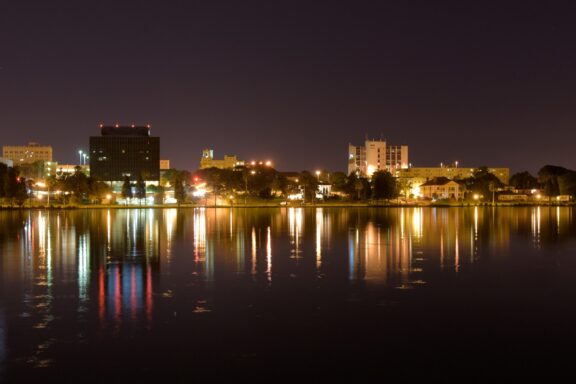
Population: 115,425
Perhaps not surprisingly, one of the most prominent features of Lakeland is the city’s many lakes. The lakes make Lakeland a popular spot for boating and fishing activities, and the city functions as a transportation hub. FedEx, GEICO, Amazon, and Publix Supermarkets are large employers in the city.
Lakeland is located between Tampa and Orlando in the Tampa Bay Area and is the closest city to the Circle B Bar Reserve, an area of 1,267 acres of protected land. The city is also home to Florida Southern College.
18. Clearwater
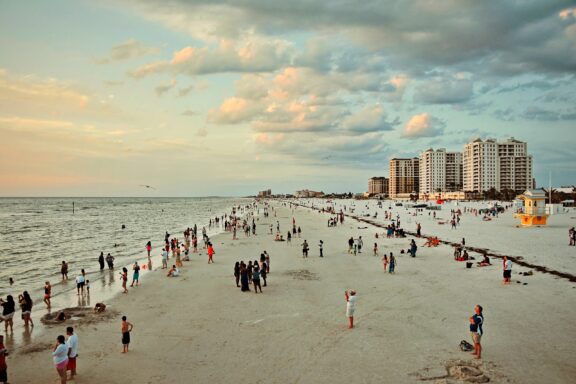
Population: 116,674
Florida’s city of Clearwater is located in the state’s Pinellas County and Tampa Bay Area, bordering the Gulf of Mexico. Because of its location, the weather in Clearwater is generally warm or hot all year, and most of its annual rainfall occurs between June and September.
As with many other Florida beach cities, tourism is popular in Clearwater, thanks to white sand beaches and clear waters. In fact, Clearwater is often considered one of the best beaches in the state. The Clearwater Marine Aquarium is another attraction in the city, housing rescued marine life like sea turtles and dolphins.
17. West Palm Beach
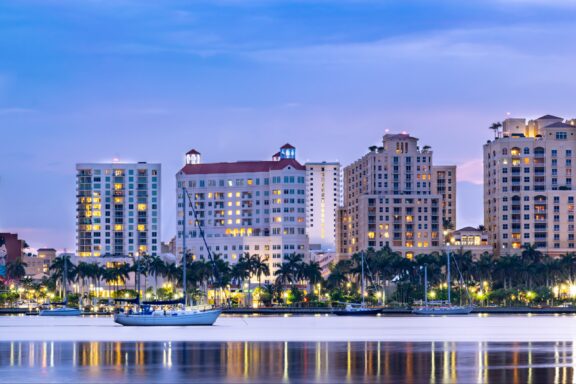
Population: 117, 286
Another one of Florida’s largest cities is West Palm Beach, which is the county seat of Palm Beach County and is located just west of the much smaller town of Palm Beach. Historically, West Palm Beach was oriented in a narrow, north-south stretch of land due to the large wetlands located immediately west of the city. The city has since expanded westward, but this part is largely uninhabited.
In addition to beach activities, there are several cultural festivals that attract visitors to West Palm Beach. These include SunFest, an art and music festival; Palm Beach International Film Festival; and the Palm Beach Opera.
16. Palm Bay
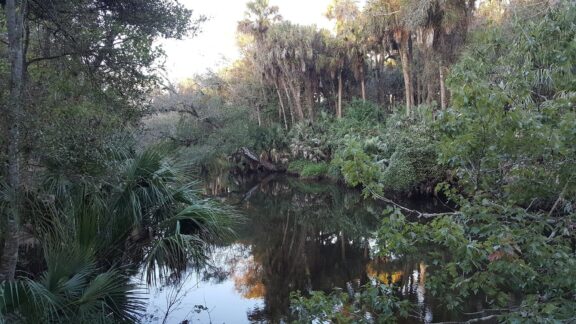
Population: 122,942
Part of the greater Melbourne metropolitan area and the largest city in Brevard County by area and population, Palm Bay is located on Florida’s east coast. The original inhabitants of this area were the Ais people, and American-European settlers had arrived permanently by 1870.
Today, Palm Bay is popular among tourists for its beaches and activities like fishing, swimming, and boating. There are also several parks around the city such as Turkey Creek Sanctuary and Palm Bay Regional Park, which are great places for hiking, biking, and bird-watching.
15. Coral Springs
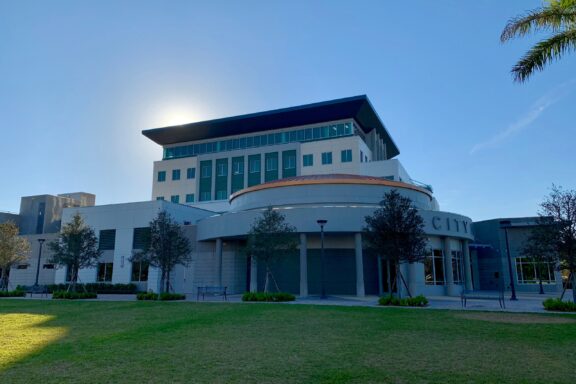
Population: 132,822
Coral Springs is known for its low crime rate, high quality of living, and family-friendly orientation. It’s the 15th-biggest city in Florida and is located toward the southeastern corner of the state, 32 km (20 mi) northwest of Fort Lauderdale. The city’s proximity to larger cities like Miami and Fort Lauderdale make it an attractive place to live.
Despite the city’s name, there are no natural springs in Coral Springs. Instead, the name comes from Coral Ridge Properties, the company responsible for planning and developing most of the city.
14. Miramar
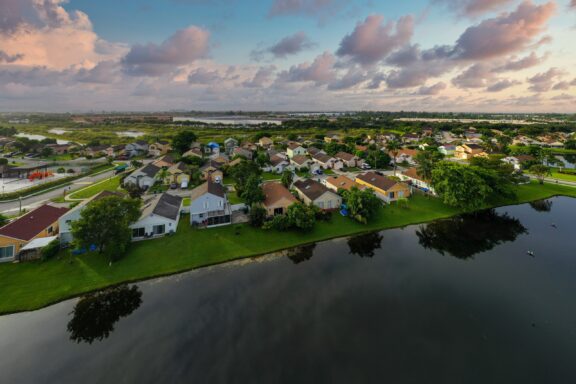
Population: 135,077
Miramar is a city in the larger Miami metropolitan area in southern Broward County. THe city was officially incorporated in 1956 and served as a convenient place to purchase a home not too far away from Miami and Fort Lauderdale. The name Miramar comes from the Miramar area in Havana, Cuba, and translates to “look at the sea” in English.
Large portions of the Miramar population are Black or Latino, and there are many immigrants from Latin America and the Caribbean in the city. The economy of Miramar is strong, and some of the largest employers are Comcast of South Florida, Strayer University, and Royal Caribbean Cruises.
13. Gainesville
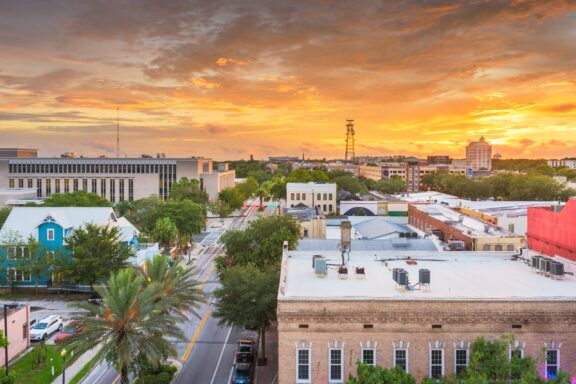
Population: 140,398
The largest city in North Central Florida is Gainesville. The city has a population of more than 140,000, which is more than a 10% increase from its 2010 population of under 125,000. The tree life in Gainesville is impressive, as the tree canopy is dense and covers nearly half of the city’s area.
Gainesville is the home of the University of Florida (UF), which has the fourth-highest enrollment numbers of any public university in the USA. UF is also where the sports drink Gatorade was invented, and the university still receives a share of the profits from drink sales. UF is the top employer in Gainesville by a large margin.
12. Hollywood
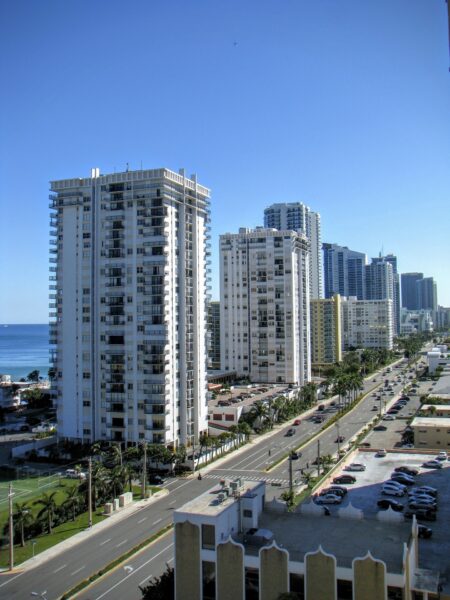
Population: 152,131
Hollywood, Florida is the 12th-biggest city in the state and is located between Miami and Fort Lauderdale. It was founded in 1925 by Joseph Young, one of many planned communities created in the area at the time, and later experienced rapid growth in the 1960s and 70s. The city’s nickname is the “Diamond of the Coast.”
Outdoor activities are popular in Hollywood, Florida, as there are around 60 parks, several golf courses, and beautiful sandy beaches. Guided tours along the Intercoastal Waterway are a popular attraction, as is the 4 km (2.5 mi) boardwalk that runs along restaurants, a theater, and bike rental shops.
11. Pembroke Pines
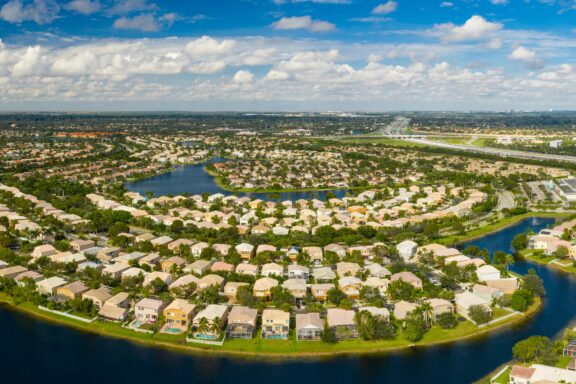
Population: 169,391
Pembroke Pines is a city in southeastern Florida with a population of just over 170,000. It is located directly north of Miramar and lies between Fort Lauderdale and Miami. The city was officially incorporated in 1960, and its population has grown dramatically over the past 60 years, though growth has started to taper off.
Hurricanes have repeatedly affected the residents of this city, which result in power loss and varying degrees of damage to buildings and landscapes. It was listed as one of the top three cities most vulnerable to coastal flooding in a study conducted in 2017.
10. Fort Lauderdale
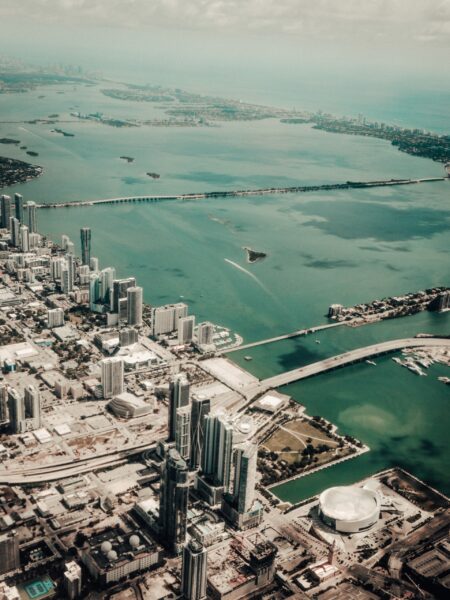
Population: 181,688
The 10th-largest city in Florida is Fort Lauderdale, which is located 48 km (30 mi) north of Miami in southeastern Florida and has a population of 182,760. The city is the largest in Broward County and was incorporated in 1911. The name of the city comes from a series of forts named after William Lauderdale in the Seminole War.
There are well over a hundred miles of inland waterways that crisscross the city, earning it the nickname, “Venice of America.” The city’s economy is supported by a diverse range of industries including tourism, finance, insurance, real estate, high technology, and television production. It is the third largest port for cruise ships in the world.
9. Tallahassee
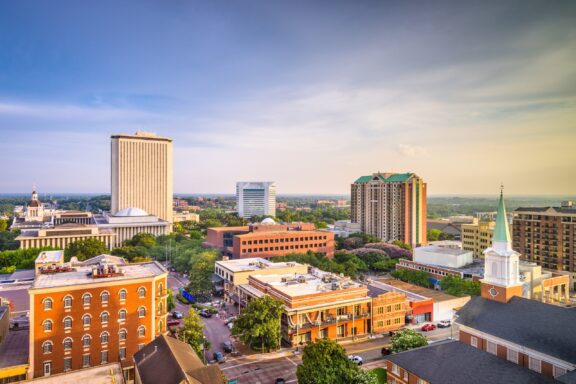
Population: 197,102
Though it’s not the largest city in Florida, Tallahassee is the state’s capital. With a population of 197,102, it is the most populous city in the Florida Panhandle. Much of the city’s population is made up of students attending Florida State University, which ranks highest in the nation among public historically black colleges and universities (HBCUs).
As the capital city of Florida, Tallahassee is the home of the Supreme Court of Florida, the Florida Governor’s Mansion, and the Florida State Capitol. The top two employers in the city are the State of Florida and Florida State University.
8. Cape Coral
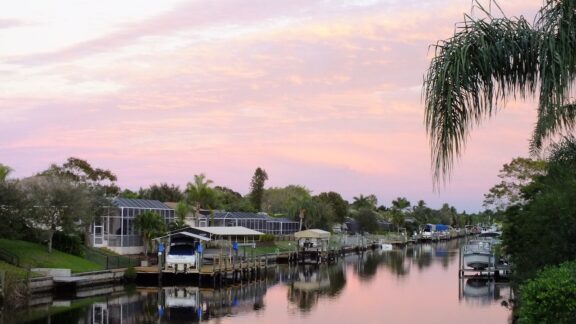
Population: 204,510
With a population of around 200,000, Cape Coral is among the biggest cities in Florida. It was founded in 1957 as a planned community and was officially incorporated in 1970. Since its inception, the population of Cape Coral grew steadily until the economic recession in 2008.
One notable feature of Cape Coral is its hundreds of miles of canals. It is known by some sources to have more miles of canals than any other city in the world. Some of these canals provide residents with access to the Gulf of Mexico, which further provides access to tropical islands and sport fishing grounds.
7. Port St. Lucie
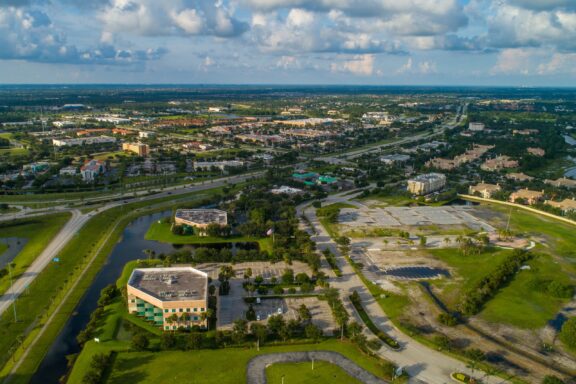
Population: 217,523
The population of Port St. Lucie is around 217,423, which makes it the seventh-largest city in Florida by population. The city is the largest in St. Lucie County and is located on the state’s east coast, 201 km (125 mi) southeast of Orlando. It was incorporated in 1961 when there were 250 homes in the area. Today, there are tens of thousands of housing units.
The city is home to a number of parks and natural areas, including the Port St. Lucie Botanical Gardens, which provide habitat for orchids, bamboo, other native plants, and wildlife like hummingbirds and butterflies.
6. Hialeah
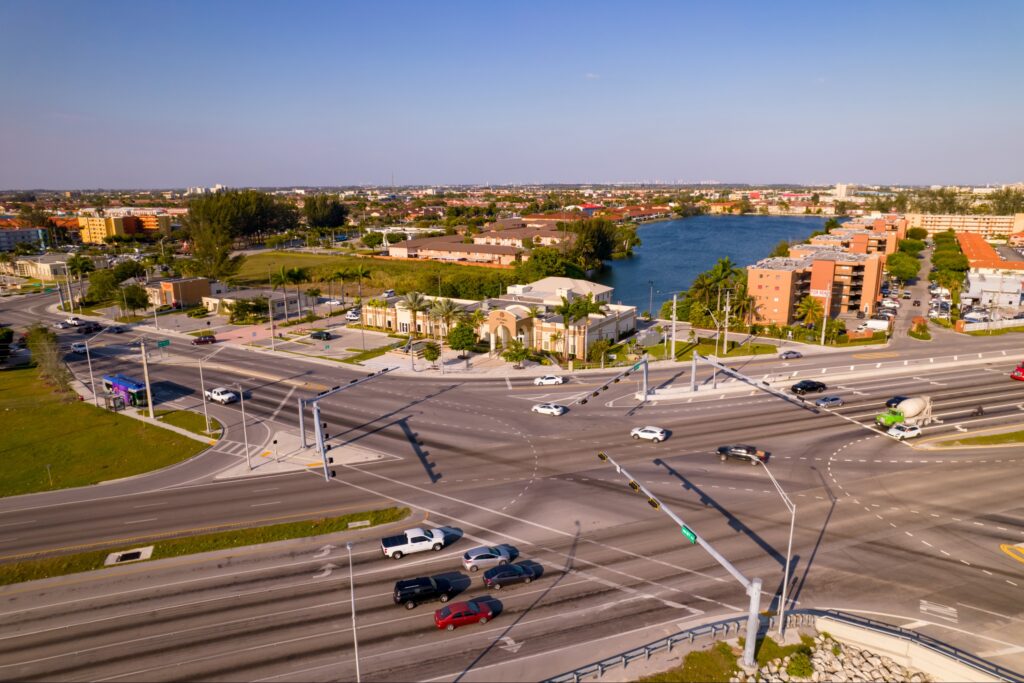
Population: 220,490
Hialeah is a city in Miami-Dade County, the largest county in the state of Florida. It’s located northwest of Miami in Southeastern Florida and does not have a coastline on the Atlantic Ocean. The name of the city is thought to come from the Muskogee words for “prairie” and “pretty.”
Notably, Hialeah is home to one of the largest Spanish-speaking communities in the US and has one of the highest Cuban populations of any city in the country. The vast majority of Hialeah residents speak Spanish, and more than 90% of the population speaks a language other than English at home.
5. St. Petersburg
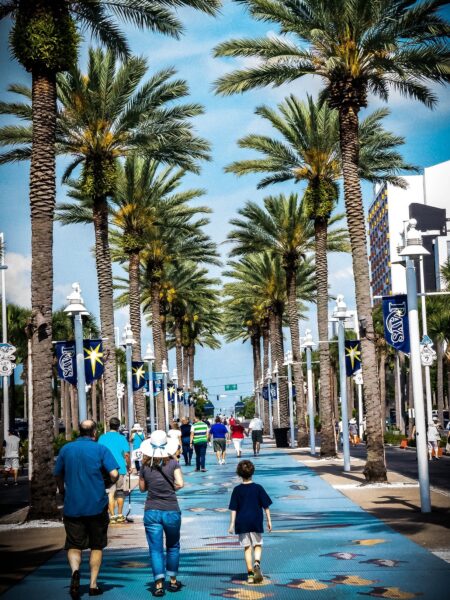
Population: 258,201
Rightfully nicknamed “The Sunshine City,” St. Petersburg gets an average of 361 days of sunshine a year and holds a Guinness World Record for the most consecutive days of sunshine (768 days). The city is also the fifth-largest city in Florida with a population of around 260,000.
The city was named after St. Petersburg, Russia after one of the city’s co-founders allegedly won a coin toss deciding who would get to name the city and decided to name it after the place he spent half his youth. St. Petersburg was incorporated in 1892 with a population of just 300.
4. Orlando
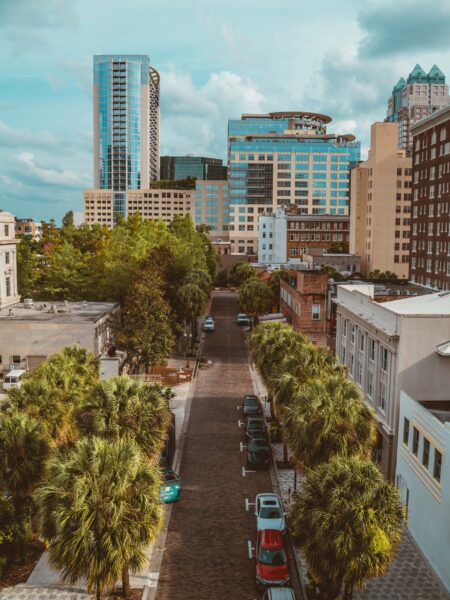
Population: 309,154
The biggest inland city in Florida, and the fourth-biggest overall, is Orlando. It is the seat of Florida’s Orange County and is located in Central Florida. The landscape of the city is mostly wetlands of many lakes and swamps, and the area is susceptible to sinkholes. There are hundreds of lakes in the area, the largest of which is Lake Apopka.
Orlando is one of the most-visited cities in the world thanks to the several theme parks, busy airport, and its role in hosting many regional events. The Walt Disney World Resort is the most notable theme park in the city.
3. Tampa
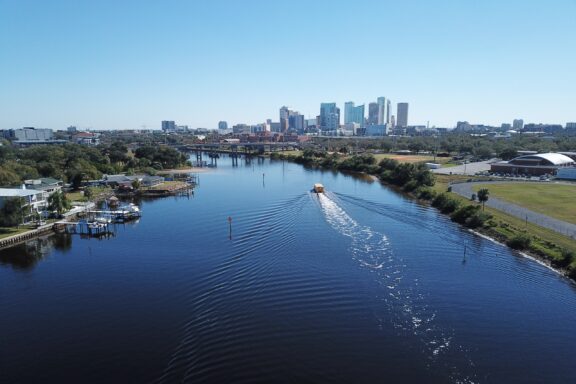
Population: 387,050
After Jacksonville and Miami, Tampa is the third-biggest city in Florida and the 52nd-biggest in the United States. It’s located on the Gulf Coast of Florida, bordering Old Tampa Bay and Hillsborough Bay. The port in Tampa is the largest in the state and makes significant contributions to the city’s economy.
The area around modern-day Tampa was inhabited for thousands of years by numerous indigenous peoples before the arrival of Europeans, who interacted primarily with the Tocobaga. Tampa came under the control of the US when Florida was purchased from Spain in 1821, and it was reincorporated as a city after the Civil War in 1887.
Today, Tampa is a diverse city with a strong economy and plenty of activities for residents and visitors. There are several parks in the city as well as the Busch Gardens theme park.
2. Miami
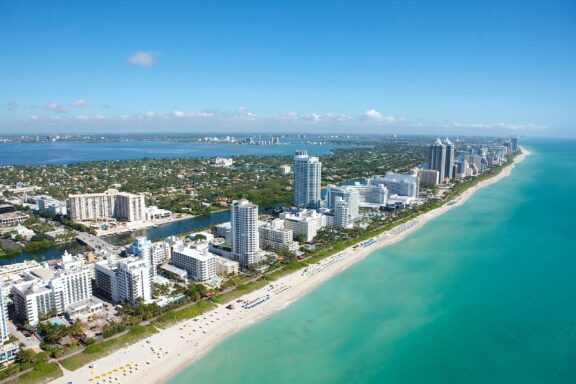
Population: 439,890
Miami is one of the most well-known cities in Florida outside of the state and around the world. It’s the second-largest city in the state and a major hub for international trade, finance, culture, and the arts. Its location on Florida’s southeastern coast and its cultural connections to Latin America has earned it the nickname, “Gateway to the Americas.” It’s also referred to as “the 305” because of the local telephone area code and “Magic City.”
Another nickname associated with Miami is the “Cruise Capital of the World” because of the Port of Miami, which is the largest cruise ship port in the world. But tourists flock to Miami for more than its role as a cruise destination. It’s also famous for its South Beach, downtown area, Bayside Marketplace, and more. It was the second most visited city in the US by foreign tourists in 2020.
1. Jacksonville
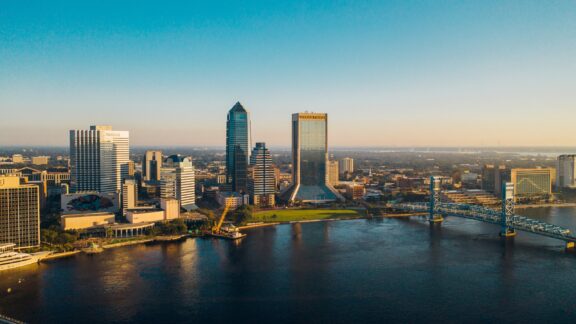
Population: 954,614
Jacksonville is the biggest city in Florida by population. There were an estimated 954,614 residents in 2021, which places it far ahead of any other city in the state and the 12th-most populous city in the US. The city is located in the northeast corner of Florida about 19 km (12 mi) away from the state’s border with Georgia.
The area around Jacksonville has been inhabited for thousands of years, and the Timucua people were living there when the French arrived in the 16th century. Control of forts in the area passed between the French, Spanish, and British before the US took control in 1821. The city was incorporated in 1932 and named after former US President Andrew Jackson.
Today, Jacksonville is the largest city by landmass in the US, has the country’s largest urban park system, and has a diverse economy. The city’s deepwater port makes it a hub for trade and transportation, and biomedical technology, financial services, and consumer goods are some of its key industries.
Florida Counties
The state of Florida is made up of 67 counties, each of which has its own government, school district, and county seat. The interactive map below shows the borders of each of these counties, and displays the names of individual counties when hovering over them with the mouse. The circles on the map represent the biggest cities in Florida, each with a population of at least 50,000.
Below is another Florida administrative map with the flag of Florida (click to enlarge):
